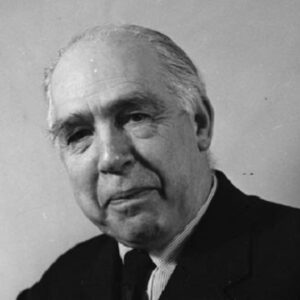Niels Bohr was a Nobel Prize-winning Danish physicist who made groundbreaking contributions to quantum theory and the study of atomic structure. He was born into a powerful and well-educated family and is widely considered as one of the most prominent physicists of the twentieth century. He undertook extensive study on atomic structures with Ernest Rutherford after getting his doctorate in physics. He was the first to successfully explain the main lines of the hydrogen spectrum, and his atom theory became the cornerstone of contemporary atomic physics. He was awarded the Nobel Prize in Physics for his outstanding contribution to the knowledge of atomic structure and quantum mechanics. He also postulated the complementarity principle, which asserts that objects can have a dual nature, comparable to an electron, which can act as both a particle and a wave, but humans can only experience one of them at a time. During World War II, he eluded German authorities and eventually made his way to the United States, where he became a key member of the Manhattan Project’s physicist team. He was also a well-known humanitarian who spent the remainder of his life campaigning for the peaceful use of nuclear energy after the war.
Childhood and Adolescence
He was born in Copenhagen, Denmark, on October 7, 1885, to Christian Bohr, a physiology professor, and his wife, Ellen Adler Bohr, a wealthy Danish Jewish family’s daughter. Jenny, his older sister, and Harald, his younger brother, were his siblings.
He began his schooling at the Gammelholm Latin School, which he entered when he was seven years old. From 1903 to 1905, he studied physics at Copenhagen University, where he was mentored by Professor Christian Christiansen.
He graduated from the University of Copenhagen with a master’s degree in physics in 1909 and a doctorate in physics in 1911. The electron theory of metals was the subject of his doctoral dissertation.
Career of Niels Bohr
In 1911, he visited England and met J. J. Thompson of Cambridge University’s Cavendish Laboratory. He did some cathode ray research, but it didn’t impress Thomson. Later, Ernest Rutherford invited him to pursue atomic structure post-doctoral research in England.
The famous ‘old quantum theory’ was founded on Bohr’s article on atomic structure, which was published in 1913.
He worked as a physics lecturer at Manchester’s Victoria University from 1914 until 1916.
In 1916, he was appointed to the University of Copenhagen as a professor of theoretical physics, a position he held for 46 years. He established the Copenhagen University’s ‘Institute of Theoretical Physics’ in 1920 and remained as its administrator until 1962.
He fled Denmark for America during World War II, where he worked on the Manhattan Project. Following the war, he became a vocal opponent of nuclear weapons and a proponent of the peaceful use of atomic energy.
He was the president of the Royal Danish Academy of Sciences from 1938 until his death, and he oversaw the first phase of the Commission’s program for the peaceful uses of atomic energy.
In 1954, he played a key role in the formation of the European Organization for Nuclear Research (CERN).
Major Projects of Niels Bohr
He created an atomic model in which electrons are said to travel in fixed orbits around the nucleus of the atom, and he went on to explain how electrons emit and absorb energy. He proposed that an electron may fall from a higher-energy orbit to a lower-energy orbit, emitting a quantum of discrete energy in the process. He is also credited with inventing ‘the complementarity principle,’ which states that the wave and particle components of nature are complimentary and cannot be experienced at the same time. According to the principle, entities can be studied individually in terms of contradicting properties, such as behaving like a wave or a stream of particles.
Achievements & Awards
The Royal Society of London awarded him the renowned ‘Hughes Medal’ in 1921.
He received the ‘Noble Prize in Physics’ in 1922 for “services in the exploration of the structure of atoms and of the radiation originating from them.”
The ‘Italian Society of Sciences’ awarded him the ‘Matteucci Medal’ in 1923.
The Franklin Institute of Philadelphia awarded him the ‘Franklin Medal’ in 1926.
For his outstanding contributions to theoretical physics, he was awarded the prestigious ‘Max Planck Medal’ in 1930.
He was awarded the ‘Copley Medal’ by the Royal Society of London in 1938 for his outstanding contributions to the “development of the quantum theory of atomic structure.”
He received the ‘United States Atoms for Peace Award’ in 1957. In the same year, he was awarded the University of Copenhagen’s ‘Sonning Prize.’
Personal History and Legacy
He married Margrethe Nrlund, the sister of mathematician Niels Erik Nrlund, on August 1, 1912. Six sons were born to the marriage, two of whom died under tragic circumstances.
He died of a stroke on November 18, 1962, at his house in Carlsberg, Copenhagen, Denmark. His corpse was burned, and his ashes were interred in the Assistens Cemetery in Copenhagen’s Nrrebro neighborhood.


